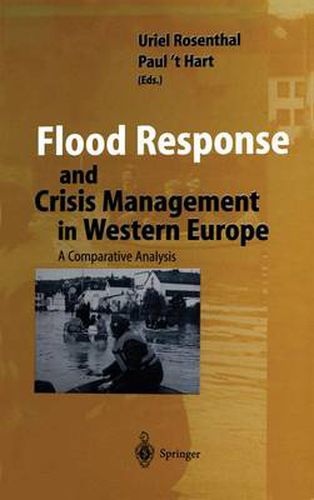Readings Newsletter
Become a Readings Member to make your shopping experience even easier.
Sign in or sign up for free!
You’re not far away from qualifying for FREE standard shipping within Australia
You’ve qualified for FREE standard shipping within Australia
The cart is loading…






This title is printed to order. This book may have been self-published. If so, we cannot guarantee the quality of the content. In the main most books will have gone through the editing process however some may not. We therefore suggest that you be aware of this before ordering this book. If in doubt check either the author or publisher’s details as we are unable to accept any returns unless they are faulty. Please contact us if you have any questions.
Throughout the last 20 years, the study of disasters has developed into a well respected body of know ledge in the social sciences. Disaster research has found its way to several disciplines and it has been remarkably receptive to multi and interdisciplinary impulses. Many disaster studies show how important and stimulating it is to explore events and developments which reach beyond the usual business of the social and political fabric. There. is quite a difference between the daily routines of social and political life, and the upheaval, stress, and shock of a life-threatening danger which may fall upon society. Even when the danger does not materialize to the fullest and society gets off with a fright, the population as well as the authorities may experience demanding situations and critical moments which ask for an effective and quick response. Although the study of disasters is in steady progress, there still remains a lot to be done. One of the blind spots in disaster research continues to be cross national knowledge of disasters and disaster management. Certainly, during the last decade a number of encouraging efforts have been made to promote a more international perspective in disaster management. But as disasters and crises will increasingly feature transnational and even global characteristics, in that sense disaster and crisis research are lagging behind. Students of disasters and crises cannot limit themselves to typically domestic and local events.
$9.00 standard shipping within Australia
FREE standard shipping within Australia for orders over $100.00
Express & International shipping calculated at checkout
This title is printed to order. This book may have been self-published. If so, we cannot guarantee the quality of the content. In the main most books will have gone through the editing process however some may not. We therefore suggest that you be aware of this before ordering this book. If in doubt check either the author or publisher’s details as we are unable to accept any returns unless they are faulty. Please contact us if you have any questions.
Throughout the last 20 years, the study of disasters has developed into a well respected body of know ledge in the social sciences. Disaster research has found its way to several disciplines and it has been remarkably receptive to multi and interdisciplinary impulses. Many disaster studies show how important and stimulating it is to explore events and developments which reach beyond the usual business of the social and political fabric. There. is quite a difference between the daily routines of social and political life, and the upheaval, stress, and shock of a life-threatening danger which may fall upon society. Even when the danger does not materialize to the fullest and society gets off with a fright, the population as well as the authorities may experience demanding situations and critical moments which ask for an effective and quick response. Although the study of disasters is in steady progress, there still remains a lot to be done. One of the blind spots in disaster research continues to be cross national knowledge of disasters and disaster management. Certainly, during the last decade a number of encouraging efforts have been made to promote a more international perspective in disaster management. But as disasters and crises will increasingly feature transnational and even global characteristics, in that sense disaster and crisis research are lagging behind. Students of disasters and crises cannot limit themselves to typically domestic and local events.